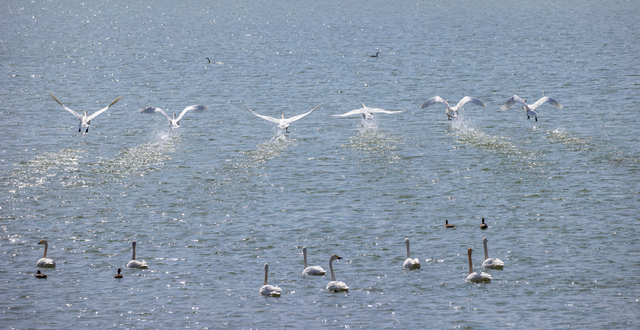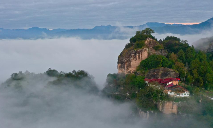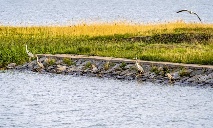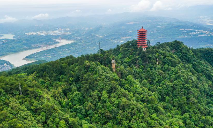Mute swan rescued nearly seven years ago “visits” man who saved its life
A man in Beijing who rescued a trapped mute swan nearly seven years ago is still as close as ever with the migratory bird.

Photo shows the mute swan with a band that reads “F67” attached to its neck at Nanhaizi Park in Beijing. (Photo/Beijing Daily)
Pan Qingquan, a professional photographer, removed the bird with a band that read “F67” attached to its neck from a net on Nov. 5, 2016, when he discovered it at Nanhaizi Park in the city.
Since then, Pan has continued to visit the mute swan, which belongs to a species that is under second-class national protection, coming by every day and feeding the bird food such as corn kernels and peanuts. “I knew that it was not an ordinary swan because the band ‘F67’ was a tool scientists used to track it,” Pan said.
Seeing swans fly over a lake has been a childhood dream of Pan’s. In 2011, Pan, together with his counterparts from a photographers’ association in Beijing’s Daxing district, went to photograph swans inside Yandunjiao village, a paradise for swans in Weihai city, east China’s Shandong Province.
In the 1970s, a local farmer saved an injured swan, which made a recovery and was released back into the wild. A swan rescue base was then built there, which also provides food for the birds. Gradually, an increasing number of swans began to overwinter at the village. One year, there were as many as 700 swans that wintered there.

(Photo/Beijing Daily)
In 2007, the village became a part of the Rongcheng Swan National Nature Reserve in Rongcheng, a county-level city of Weihai. Now, nearly 5,000 swans overwinter in the nature reserve every year.
“I envied residents in the village having a habitat for swans and expected one near my home in Beijing,” Pan said.
The appearance of the mute swan with the “F67” tag rekindled Pan’s childhood dream. “I fed it, hoping that it would stay here,” Pan said.
Pan went to Nanhaizi Park to feed the swan as usual on the 39th day after they met each other. The swan was very familiar with Pan and approached him to get some food. But the swan then flew south that day.
Pan felt lost and sent photos of the swan to a chat group of shutterbugs across the country, hoping that someone who photographed the swan would immediately inform him. Three days later, he received photos of the swan living in Yandunjiao village, which made him excited.
Surprisingly, the swan “revisited” Nanhaizi Park together with other swans in the ensuing year. “I felt so excited when I met it again. It directly approached me as if it ‘remembered’ me,” Pan recalled, adding that the “reunion” made him believe that the park would become an ideal habitat for swans.

(Photo/Beijing Daily)
Pan then took care of the birds in the park almost every day, keeping them away from stray dogs and yellow weasels while reminding photographers and tourists to keep a safe distance between themselves and the swans.
Since then, the mute swan with the “F67” tag arrived at Nanhaizi Park for a stopover alongside more and more swans during their seasonal migration every year. This year, the park has welcomed a new record of more than 420 swans so far.
With a total area of more than 11 square kilometers, Nanhaizi Park has become the largest wetland park in Beijing. As further improvement has been witnessed in the wetland ecosystem of the park, it has become an important habitat for birds and a vital “transfer station” for migratory birds. More than 200 species of wild birds have been monitored at the park by the Beijing Biodiversity Conservation Research Center.

(Photo/Beijing Daily)
Photos
Related Stories
- Black swan family enjoys time together in Nanjing park
- Better environment attracts swans, tourists
- Whooper swans rest in east China city before migrating back
- Whooper swans seen at reserve in Rongcheng
- Swans pictured on Qingshui river in Miyun District of Beijing
- Swans seen at Donggu Lake wetland, Hunan
- Wild geese, swans arrive at Hongjiannao Wetland Reserve in NW China
- In pics: swans at Hekou Reservoir wetland in Yulin, NW China
- Whooper swans migrate to nature reserve in Shandong for winter
- Old Summer Palace has new members!
Copyright © 2022 People's Daily Online. All Rights Reserved.









